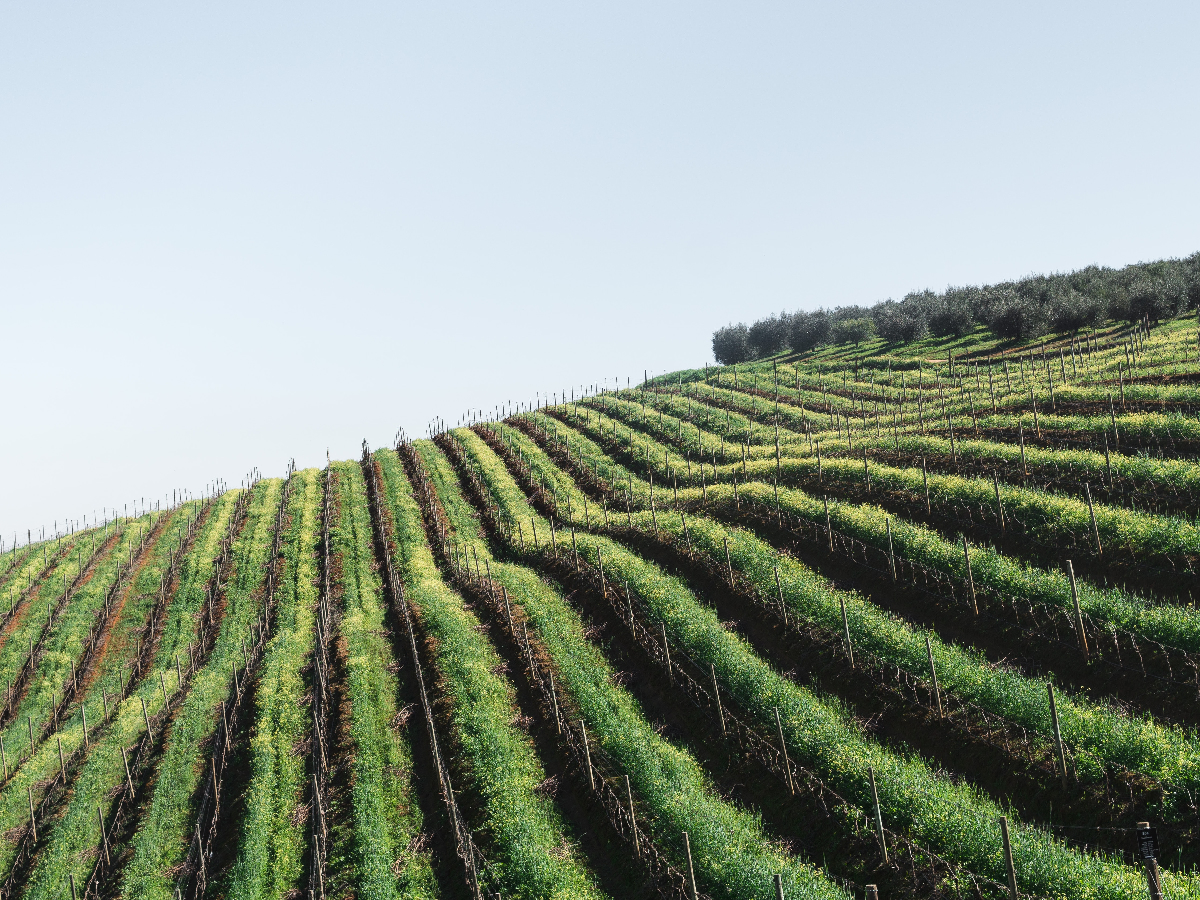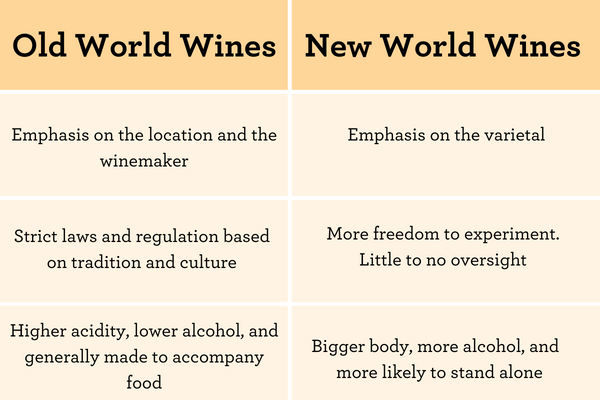Old World vs New World Wines: Tradition Meets Trendy
Classic or contemporary? Explore the stylistic and geographical differences between traditionally made wines and their modern counterparts.

This article first appeared on LocalWineEvents. See the original post here.
Raise your hand if you're one of the many wine drinkers who say they don't like Chardonnay. Or maybe you're like Paul Giamatti in Sideways and you're "not drinking any @#$% Merlot!"
Well then Uncorked Kitchen & Wine Bar's "Old World vs New World" wine tasting class has a message for you — "Never write off a varietal".
The class focuses on sampling two versions of the same grape varietal—one from an Old World country (essentially Europe and the Middle East), and another from the New World (everywhere else)—through side-by-side tastings.
The result calls into question everything you thought you liked (or don't like) about a given varietal. And that's the point.
Let's take for instance the first pair of wines, both made from the highly polarizing Chardonnay. One was a French Chablis from the Burgundy region, also known as a "white Burgundy". The other a classic California Chardonnay so full of oak that another participant said it smelled (and tasted) like a freshly cut two-by-four.
The wines could not be more different. Why? That's where location, process, and tradition (or lack thereof) make all the difference in what turns up in the glass.
Location Location Location
The most simple designation between Old World and New World wines are of course the location. Old World wines come from Europe and the Middle East—France, Italy, Spain, Portugal, Greece, etc. New world wines hail from everywhere else—North America, South America, Australia, etc.
At first glance, you’d think there wouldn’t be that much difference, since they grow the same vines in roughly the same global latitude.

But latitude only goes so far. There’s no shortage of unique terrain differences that have a huge impact, with varying microclimates, soil types (like clay, limestone, etc) and even the steepness of the slopes that affect how much sun the grapes get.
Taken together, these little variations in soil, topography, climate and other factors culminate in what's called "terroir". Because terroir differs from region, village, and even sub-village, Old World wines place a far greater emphasis on these factors than on the shared varietal between them. That's why you see Old World wine labels giving top billing to where the vines are grown and the estate or vineyard that made the wine, and rarely even list the varietal.
New World wines are the opposite. Often (but not always) New World wines stem from varietals grown in larger swatches of land consisting of multiple microclimates combined into the same vintage. That's why they generally list the varietal front and center.
Rules, Regulations, and Revolution
This focus on region among the Old World wines carry with it a host of rules and regulations dictating how the wine made in each area is made. These strict laws are designed to preserve the authenticity of each area so no individual winemaker can "go rogue" and tarnish the reputation of the region.
These rules are based on traditional agricultural and winemaking practices, perhaps sometimes antiquated, passed down through generations. Agricultural regulations include details like irrigation practices, vine spacing, harvest methods, yield, and so on. Winemaking rules regulate fermentation methods, aging periods, forbidden additives, and more.
New World wines are generally free from such oversight, with a far more relaxed approach. New World winemakers tend to encourage experimentation over tradition. They are free to benefit from modern agricultural advancements (such as vineyards designed literally from the ground up to accommodate tractors and industrial irrigation systems).
In short, New World wines reflect only on the individual winemaker, while Old World wines reflect on the region as a whole.

But What About Taste?
So that's some interesting background information, but what about flavor? Do Old World and New World wines taste notably different? Is one better than the other?
There certainly are differences between Old World and New World wines. For starters, Old World wines are typically made to be enjoyed with food. As such they tend to have more structure and complex flavors to hold up to food pairings, as well as higher acidity and lower alcohol.
New World wines of course also go great with food, but many are enjoyable on their own as well in greater numbers. That means lower acidity, bigger body, and more alcohol.
As for flavors, speaking strictly in broad strokes… Old World wines skew more toward lighter and tart fruit characteristics, more minerality and earthiness, less oak, and an overall more restrained and delicate in flavor and structure. New World wines meanwhile bend towards making the fruit the focus, with less earthiness and more robust and ripe flavors, definitely more oaky, and a bigger/bolder structure.
Which tastes better? Well that’s up to you. And the best way to determine that is through experimentation. So the next time you taste a California Cab that was just too overbearing, look for cabernet sauvignon wines from France to test your opinion. If a French Sancerre is just too one-dimensional, shift gears and try a Sauvignon Blanc from New Zealand.

The biggest takeaway from the "Old World vs New World" class is that the grape/varietal is sort of like the messenger… the vehicle for all the technique, tradition, and terroir of the winemaking regions and winemaker involved.
After all, that's what makes wine so much fun.
Antony Bruno is a Colorado-based veteran storyteller, writer and editor. After 30 years of writing about the intersection of technology and culture, he's spending the next 30 writing about food, wine, travel, and adventure.
Ready to experience a wine tasting? Uncorked-style? Check out our calendar of upcoming wine tastings today.
Hours
Closed Monday
Tuesday-Friday 3pm–10pm
Saturday 12pm-10pm
Sunday 12pm-6pm
HAPPY HOUR
Tuesday-Friday 3pm–6pm
Sunday 12pm-6pm

